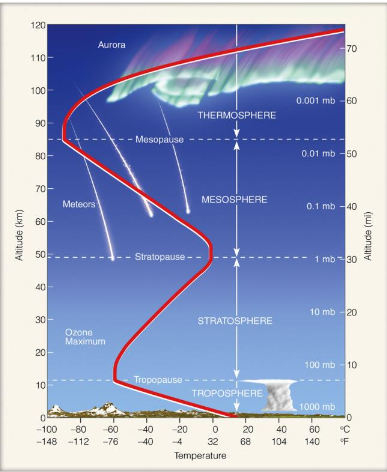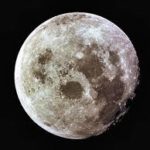Traveling around the world
Earth is marginally bigger than Venus and almost double the size of mars. If you want to circle the earth by foot, the distance would be around 40.000 km or around 24.800 miles. The travel can not be exactly calculated because of the variasjons that come, and the earth is not a perfect sphere form.

Ancient greeks knew that the world was circular and it’s size
Over 2,300 years ago, there was a great thinker called Aristotle, perhaps best known for his philosophical ponderings with Plato. Along with being a dab hand at politics, poetry, theater, music, natural sciences, and philosophy, Aristotle was also a prodigy of astronomy. Other ancient Greeks had hinted at the idea of a spherical Earth through vague poetic statements, including Plato and Pythagoras, but Aristotle was the first to concretely put it into words.

In the treatise On the Heavens, written way back in 350 BCE, he explained: “Again, our observations of the stars make it evident, not only that the Earth is circular, but also that it is a circle of no great size. For quite a small change of position to south or north causes a manifest alteration of the horizon.
“Indeed there are some stars seen in Egypt and in the neighborhood of Cyprus which are not seen in the northerly regions; and stars, which in the north are never beyond range of observation, in those regions rise and set. All of which goes to show not only that the earth is circular in shape, but also that it is a sphere of no great size.”
Layers of the Atmosphere
While there are no exact boundaries within the atmosphere, it is divide d into layers based on temperature and pressure.
The very lowest layer, which contains 90% of the atmosphere’s mass, is called the troposphere. This is also where all living things are found and where all weather occurs. Airplanes fly at the very top of the troposphere, so they can fly over the weather, which causes turbulence. The jet stream, a fast moving region of wind in the upper troposphere has been clocked at over 300 miles per hour! While temperatures at the bottom of the troposphere are nice and hospitable for life, temperatures at the top about – 60°F! The troposphere is also the thinnest layer, only about 10 miles high.
The second layer up from the ground is the stratosphere. This layer extends from about 10 – 30 miles, and unlike the troposphere, it increases in temperature with elevation. It starts out from about – 6 0°F at the bottom to about 32°F, at the top). This is because ozone molecules form here and absorb the warm ultraviolet radiation from the sun.
The third and middle layer is the mesosphere. This layer extends from 30 – 50 miles in altitude, and unlike the stratosphere below, it absorbs very little solar radiation. This layer is incredibly cold, going from freezing at the bottom to about – 130°F at the top.
The next layer up, the thermosphere, is the largest layer, extending from 50 – 300 miles. Satellites orbit Earth here, and this layer actually increases in temperature with increasing altitude. The ionosphere is a sub – layer found at the top of the mesosphere and the bottom of the thermosphere and gets it because it is ion rich. This region is a special place in the sky because this is where displays of light in the sky called auroras occur. The final layer is the called the exosphere because it is on the outside like an exoskeleton. This layer begins at about 300 miles from the ground but, as mentioned before, slowly fades into space, so it’s hard to tell exactly where it ends.
Origin of the Atmosphere
Scientists believe that Earth was formed about 5 billion years ago. In the first, 500 million years a dense atmosphere emerged from the vapor and gases expelled during volcanic degassing of the planet’s interior. These gases probably consisted of hydrogen (H 2),
water vapor, methane (CH 4), and carbon oxides. Prior to 3.5 billion years ago the atmosphere probably consisted of carbon di oxide (CO 2), water (H 2 O), nitrogen (N 2) and hydrogen. The most important feature of the ancient atmosphere was the absence of free oxygen. Evidence of an oxygen – free atmosphere is hidden in early rock formation s that contain many elements, such as iron and uranium. 3 A s the Earth continued to cool, the water vapor found in the atmosphere condensed to form the oceans and fresh water bodies on the continents. Early aquatic organisms called blue – green algae began using energy from the sun to split molecules of H 2 O (water) and CO 2 and recombine them into organic compounds and molecular oxygen (O 2). This solar energy conversion process is known as photosynthesis. Without ozone, life could not exist on land because of harmful ultraviolet radiation.
High in the atmosphere, some oxy gen (O 2) molecules absorbed energy from the Sun’s ultraviolet (UV) rays and split to form single oxygen atoms. These atoms combine with remaining oxygen to form “ozone” (O 3) molecules,
which are very effective at absorbing UV rays. The emergence of living organisms was extremely important in the creation of atmospheric oxygen and ozone. The thin layer of ozone that surrounds Earth acts as a shield, protecting the planet from irradiation by UV light. UV rays penetrate the atmosphere at three slightly different wavelengths called UV – A, UV – B and UV – C. The ozone layer completely stops the penetration of UV – C and most of the UV – B rays. Therefore, the ozone layer protects life on Earth from the harmful effects of solar radiation on a daily basis.

Can we exit earths atmosphere with 1 MPH?
It is indeed possible to escapes earths gravity with 1MPH, but there is a catch.
At 26000 AU from earth, you can start floating away, but to get there you would need to hold the constant 1MPH which would require quite a lot of enery due to the earths pull. This would be easily possible with a free energy engine, and unlikely with fossil based fuel system.
.jpg)





